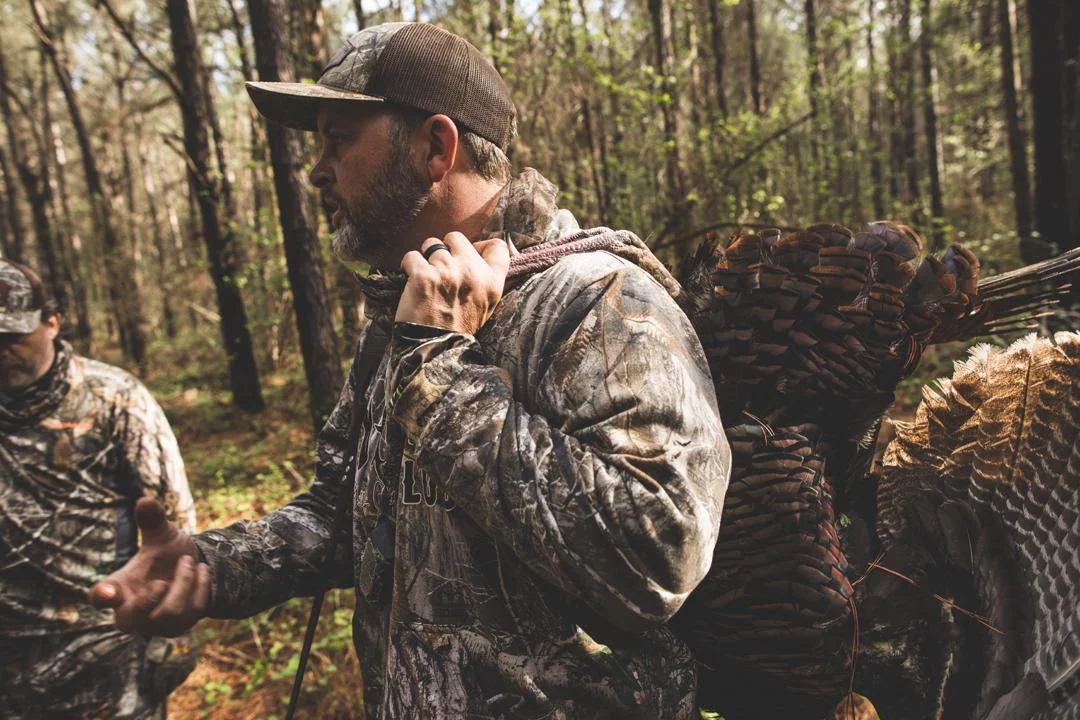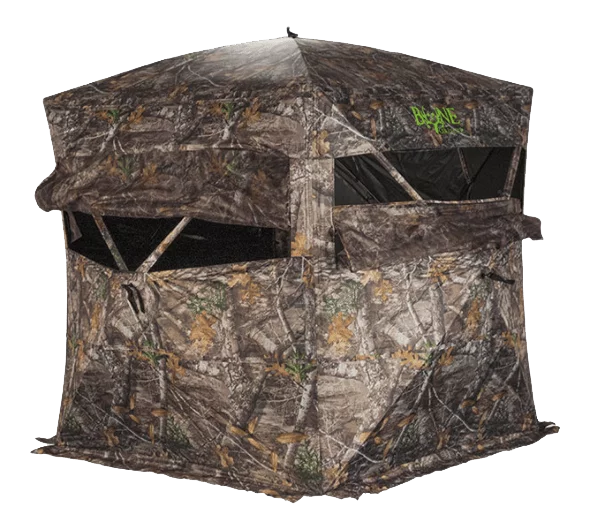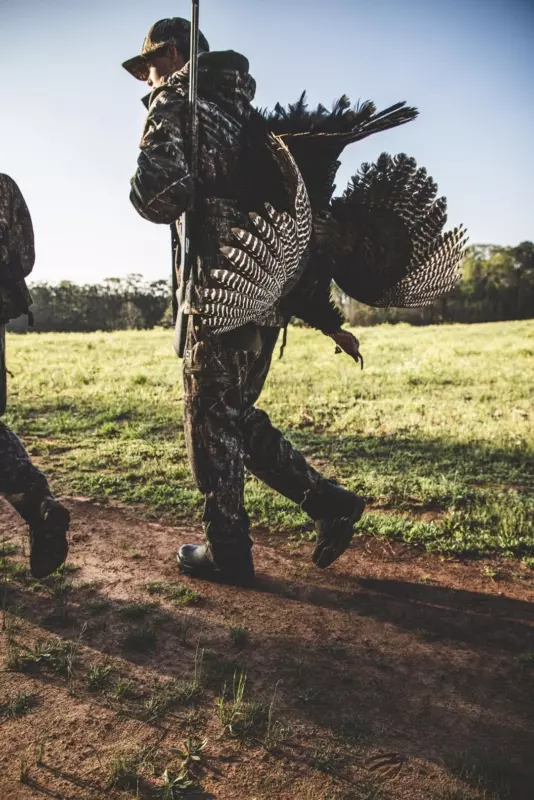Try These 3 Best Turkey Blind Setups
When it comes to hunting turkeys, you know that concealment is the name of the game. Turkeys have great vision, and anyone who’s ever spooked a gobbler in the last few seconds of a hunt can attest to that. That’s why turkey hunting blinds are such a great tool. They hide most of your movement, free up your ability to film your own hunts or bring your kids with, and allow you to hunt in areas where you might not be able to otherwise. With that said, here are three of the best turkey blind setups you can use to get a gobbler in range.
Locations for the Best Turkey Blind Setups
While these best turkey blind setups apply mostly to the Eastern subspecies, some of them can work for other western subspecies too. But for those longbeards east of the Mississippi, there are a few key locations that you can reliably ambush a tom.

Field Edges
This is the most classic turkey hunting setup there is, and it’s a classic because it just works. Whether your field is a pasture, ag field, natural grassland, or food plot, the fact is that in early spring, the vegetation isn’t usually that tall yet. In some cases, the fields may be disked or tilled, which can be even more attractive to the birds. That makes it a perfect spot for hens to feed and toms to strut. It’s also a great spot for decoying, because you should have great visibility across the field for any gobblers to see your decoys and move in on them.
Now sometimes you can pop up a hunting blind in the middle of a wide open field and still hunt turkeys effectively, but you usually have a better chance when you can hide along the field edge. Turkeys tend to walk these edges looking for food anyway, so you might as well be closer to the action. Tuck your blind into the brush or tree cover on the side of the field opening. You don’t want to be too close to or too far from the edge – too close and you’ll stick out, too far and you’ll limit your shot opportunities. Try to position your blind next to a larger diameter tree or clump of brush to help conceal its silhouette. The Rhino Blinds R-150 in Realtree® Edge camo is the perfect choice to blend into this habitat or structure. Place your decoys out in the field at least 10 to 15 yards away from your blind.

Woody Openings and Trails
Where there aren’t many large openings and turkeys are limited to small meadows, clearings, and log landings, you can use a similar approach. You can still hide your blind in the vegetation adjacent to these openings, but don’t forget to make use of trail systems too. Turkeys will often walk these trails in the mornings or evenings to navigate to each meadow or opening along the way. This easily makes it one of the best turkey blind setups for very mobile birds. The denser vegetation offers plenty of opportunities to hide your blind well too. Pile some branches around your blind and tuck some into any brush loops you have to really disappear in the background. The Rhino Blinds R-150 in Realtree® Timber camo is darker and sports a more broken up bark-like pattern that works great in wooded areas.

Try setting up your turkey blind where you have good visibility down two different trails (e.g., where trails cross, come together, or turn sharply). This spot offers good visibility for your decoys. Speaking of decoys, try using a relaxed hen decoy, 2 feeder hens, and potentially a jake decoy, which looks very natural for this transition area and may challenge a tom to come in and chase the jake off.
Oak Flats
Open oak flats are much more attractive to turkeys in the fall when there are all kinds of freshly fallen acorns on the ground. But in early spring, you can bet that a few birds will be there to scratch around for any leftovers. You can often see the scratch marks in the leaf litter, which is a good sign to see. In many of these oak stands, the forest floor also fills in with lots of other grasses and forbs before the oak leaves are fully developed, which can offer food sources to the birds.
This scenario is a bit like the woody trails – simply position yourself against the base of a large oak tree, a fallen tree top, or clump of shrubs to conceal your turkey blind as much as possible. Feeding hen decoys work best in these areas, as it simulates a small group of hens contently feeding on acorns.
Tips for Concealing a Turkey Blind
Of course, the best turkey blind setups discussed above are only further improved with a little more preparation and consideration.
- If at all possible (i.e., on private land), try to set up a turkey blind early in the season. Turkeys aren’t always super discerning of blinds, but if you can get them used to seeing it for a week or two ahead of your hunt, you will likely have better luck.
- Yes, turkeys may walk right past a new hunting blind with no other concealment in the middle of a field. It does happen. But if you can use branches or other vegetation to hide the profile and further conceal it, why wouldn’t you take the extra steps to prepare one of the best turkey blind setups you can?
- Keep your blind windows mostly closed except for the one looking out at the decoys. You may be tempted to crack the other ones so you can keep an eye out around you, but that can let more light in and reduce your blind’s ability to hide your profile inside.
- When you’re turkey hunting inside a blind exclusively, you shouldn’t be relying on your usual spring turkey hunting clothing with light camo patterns and flecks of green. The inside of most hunting blinds is black, especially when you have most of the windows closed, so your upper layers, face mask, and hat should really be dark in color.
- Remember to position your turkey blind so the sun will be behind you instead of spotlighting your open window and face. For example, if you typically only hunt turkeys in the morning, position your blind so it’s facing west. That way, the sun will shine into the turkey’s faces when they look toward your blind position.
- It may also help to position your blind so the turkeys approach you from your side or even behind you. That way, they don’t look straight at you when approaching the decoys.



